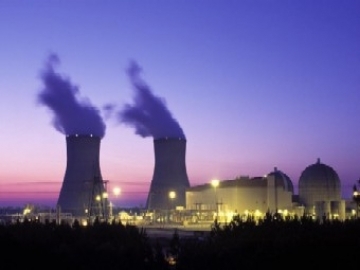 If Europe can do it, the U.S. can do it.
And we know
Georgia can get a third of its power from wind,
and even Spain is north of Mississippi, Alabama, Georgia, and Florida,
which have a lot more sun for solar power than anywhere in Europe.
Solar power
is already winning, even in Georgia.
Let’s help it win even faster, plus wind.
If Europe can do it, the U.S. can do it.
And we know
Georgia can get a third of its power from wind,
and even Spain is north of Mississippi, Alabama, Georgia, and Florida,
which have a lot more sun for solar power than anywhere in Europe.
Solar power
is already winning, even in Georgia.
Let’s help it win even faster, plus wind.
PR from Potsdam Institute for Climate Impact Research (PIK) 16 January 2014,
EU could cut emissions by 40 percent at moderate cost,
 The costs of achieving a more ambitious EU climate target are
estimated to be moderate. Upscaling greenhouse-gas emissions
reduction from the current 20 percent by 2020 to 40 percent by 2030
would be likely to cost less than an additional 0.7 percent of
economic activity.
The costs of achieving a more ambitious EU climate target are
estimated to be moderate. Upscaling greenhouse-gas emissions
reduction from the current 20 percent by 2020 to 40 percent by 2030
would be likely to cost less than an additional 0.7 percent of
economic activity.
And that apparently doesn’t count the additional economic activity
that would be produced by all those wind and solar deployments,
not to mention related activities like electric cars.
This is actually a pessimistic study, because it doesn’t account
for such likely positive corollaries.
Many options to choose from—wind power could expand sevenfold
Continue reading →
 Today is the last day to
comment to GA EPD about Georgia Power’s demand for
more new water for the Plant Vogtle nukes than Savannah uses.
As Southern Company CEO Tom Fanning said two years ago,
“water, more than air, is the issue of the future”.
Comments may be emailed to EPDComments@dnr.state.ga.us with the subject line “Plant Vogtle.”
See below for videos of what people said at a recent public hearing.
Today is the last day to
comment to GA EPD about Georgia Power’s demand for
more new water for the Plant Vogtle nukes than Savannah uses.
As Southern Company CEO Tom Fanning said two years ago,
“water, more than air, is the issue of the future”.
Comments may be emailed to EPDComments@dnr.state.ga.us with the subject line “Plant Vogtle.”
See below for videos of what people said at a recent public hearing.





 Less than two years after
Less than two years after





